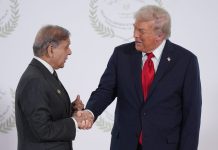As India and the US are expected to discuss major defense deals, including that of fighter jets, this week, analysts point out the difficulties that New Delhi will face in procuring them.
Soon after US President Joe Biden’s maiden multinational summit with the QUAD heads of the government, his Defence Secretary Lloyd Austin will undertake his maiden foreign visit to three countries – South Korea, Japan, and India – this week. Significantly, two of them – Japan and India — also happen to be America’s QUAD partners.
In his talks with Indian Defense Minister Rajnath Singh in New Delhi, Austin will “discuss operationalizing the major defense partnership that we have with India, including through enhanced information sharing, regional security cooperation, defense trade, and cooperation in new domains”, Acting Assistant Defence Secretary for Indo-Pacific, David F Helvey said on Friday (12 March) after the QUAD summit.
When it comes to “defense trade”, among other American arms, ammunition, and platforms for India, the most important happens to be Lockheed’s F-16 (or the improved variant F-21), and Boeing’s F-15EX and F/A-18E/F fighters that are bidding for India’s Medium Multi-Role Combat Aircraft (MMRCA) 2 tender of worth about $20 billion.
MMRCA-2 promotes the Make-in-India initiative, under which the country pursues to jointly manufacture 114 fighter aircraft and assist its Air Force expansion plans. Boeing now seems to be keen on F-15 Ex for the IAF and the F/A-18 Super Hornet Block III for the Indian Navy.
Speaking at the First Quad Leaders’ Virtual Summit. https://t.co/Ypom6buHxS
— Narendra Modi (@narendramodi) March 12, 2021
However, despite India’s weapons procurement from the United States jumping from a meager $6.2 million to a whopping $3.4-billion in the final year of the Donald Trump administration, and that too at a time when the sale of American weapons to other countries has dipped to $50.8 billion in 2020 from $55.7 billion 2019, the chances of either the Lockheed or Boeing succeeding in the MMRCA bid appear remote, according to knowledgeable sources.
This likelihood, however, is not reflective of the otherwise upswing in the Indo-US defense ties. All told, India has already bought American weaponry worth over $18 billion over the past decade – C-130J Super Hercules transport aircraft, 10 Boeing P-8I long-range maritime patrol aircraft for the Indian Navy, Boeing C-17 Globemaster III heavy-lift military aircraft, Boeing Apache Longbow attack helicopters, 24 anti-submarine warfare Sikorsky MH-60R Seahawks and ammunitions like Raytheon/ Kongsberg National Advanced Surface to Air Missile System-II (NASAMS-II) and 145 M777 howitzers, among others.
But, when it comes to US fighter planes, analysts point out the difficulties that India will face in procuring them.
Political Hurdle
First, there will be a political problem for India to opt for Lockheed Martin’s F-16 or F-21 (which the company is saying to be made especially for India). It will be difficult to ignore adverse public opinion to buy an aircraft that Pakistan uses, even though it is one of the cheapest fighters available in the international market with a proven record of accuracy and efficiency.
Changing the name from F-16 to F-21 will not remove the stigma attached to the airplane and the negative images it produces in the minds of the Indian public. One may recall here the Bofors scam, for which there was a heavy political price, notwithstanding the gun’s superb quality.
Besides, there is an added political factor linked to the incumbent Minister of External Affairs S. Jaishankar. After he retired as the foreign secretary, he was allowed by the Modi government to take up a job as president, global corporate affairs, in Tata Sons in April 2018 by overlooking the mandatory cooling-off period of one year for retired government officials to join any private sector.
And his corporate position was widely seen as a follow-up of the agreement that the Tata Group had signed with Lockheed Martin for the joint production of the F-16 fighter aircraft in India. And from this high-profile corporate position, he was catapulted by Prime Minister Modi as the country’s foreign minister in 2019.
Given this background, buying or joint-manufacturing F-16(F-21) will be literally a political bomb for the Modi government.

A Costly Proposition?
Secondly, compared to F-16, going for Boeing’s F-15EX will be much more expensive not only to procure but also to fly and maintain. Experts have noted the estimates made by the Air Force Association (an independent, nonprofit, civilian education US organization that is meant to promote dominant U.S. Air & Space Forces, and support for Airmen and Space Professionals) that flying the F-15EX will cost $27,000 an hour.
As Indian-American military expert Amit Gupta says, for a cash-strapped India, this financial consideration cannot be overlooked because the French Rafale’s reported flight cost is $14,000 an hour.
“Fighter jets, while loved by air forces, have prohibitive costs, are expensive to maintain, and the smart weaponry that makes such systems into lethal platforms cost an arm and a leg”, he adds.
Too Many Aircraft Types
Thirdly, India is one of those rare countries whose Air Force flies a mix of French, Russian, and British combat aircraft, a situation that already is a logical and maintenance nightmare. If one adds now a modern American fighter, that will further add to the complexity and expense of the maintenance and operations process.
The Nuke Factor
Fourthly, and this is most important, fighter jets are the third leg of India’s nuclear triad. India’s ‘triad’ is a mix of Agni missiles fired from land, maritime strike capability from the INS Arihant under the sea, and dropping from the air through Sukhoi Su-30MKIs, Mirage 2000s, Rafales, and Jaguars.
Combat aircraft are also invaluable in the successful pursuit of the country’s nuclear doctrine, which stresses the prevention of both accidental and unauthorized launches because they can be recalled in the event of official authorization not being given or due to an accidental launch.
It may be noted here that one of the unstated but understandable reasons for buying the Rafale was that the French were permitting India to use the aircraft as a nuclear delivery system. This was vital to the mission planning of the IAF which sees combat aircraft as an integral part of its nuclear delivery systems.
Given its domestic laws, the US usually does not permit nations to use or buying its sophisticated weapons to use in combat situations. Their use needs Washington’s prior clearance. This being the case, will the US allow India to deliver nuclear weapons through its fighters and bombers?
In other words, India would have to negotiate with the US on whether it had complete autonomy in using American aircraft or whether they would be limited to non-nuclear missions.
If the latter conditionality was imposed it would compromise India’s strategic autonomy, which no government in Delhi will allow.
Let alone nuclear weapons, the US special permission will also be needed if the American platforms that India will buy or co-produce are to be fitted with like ammunitions from other countries such as the Israeli and French missiles.
Viewed this, it will be worth watching whether the Singh-Austin meeting will provide some answers.
Follow EurAsian Times on Google News




